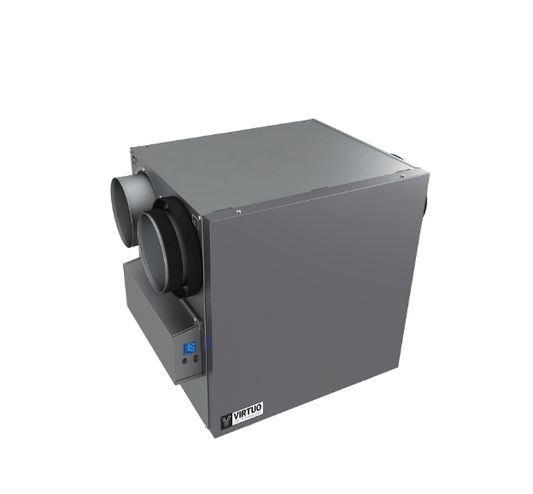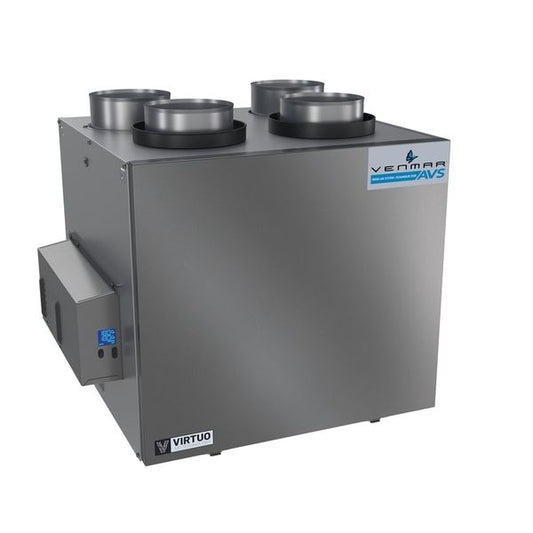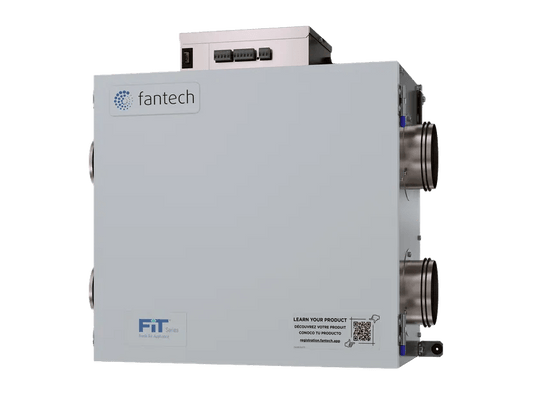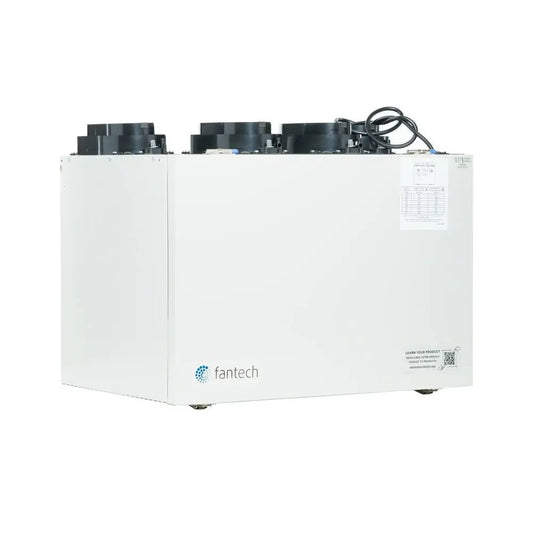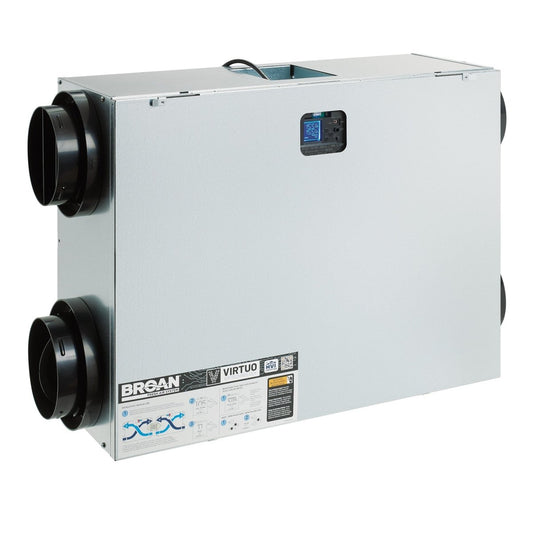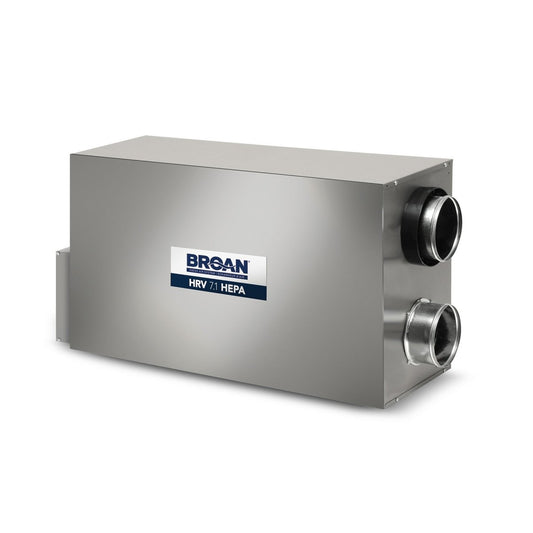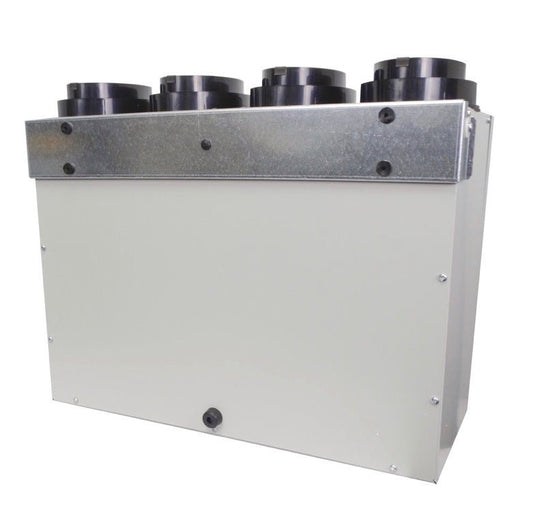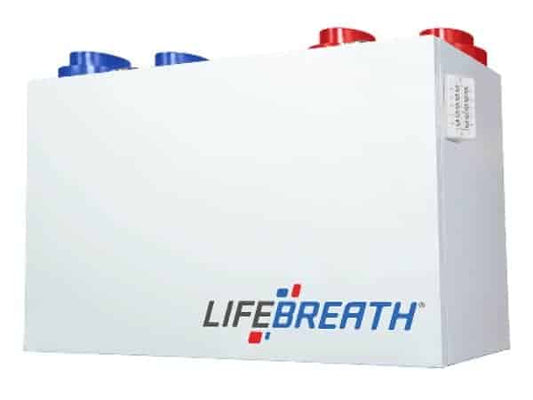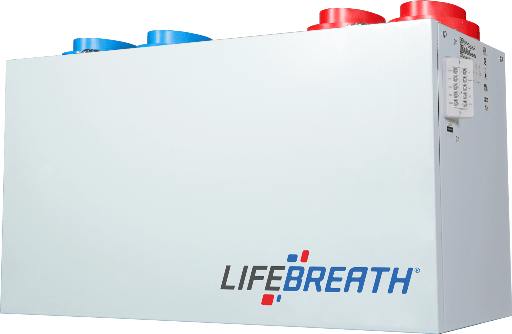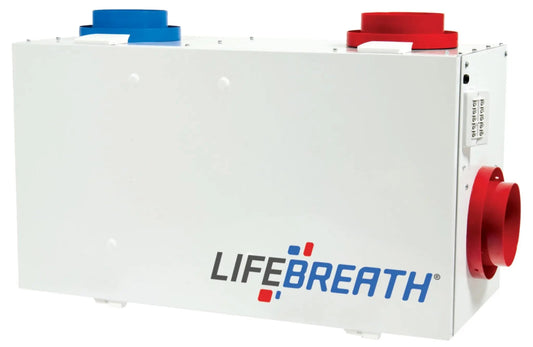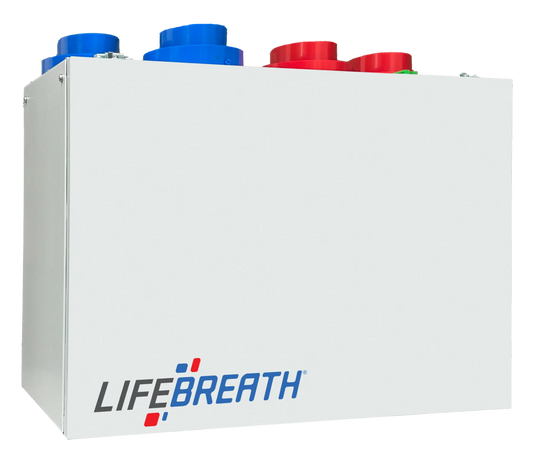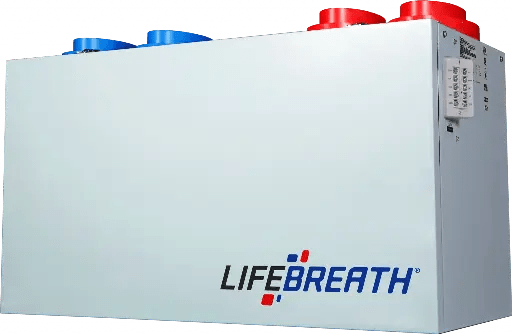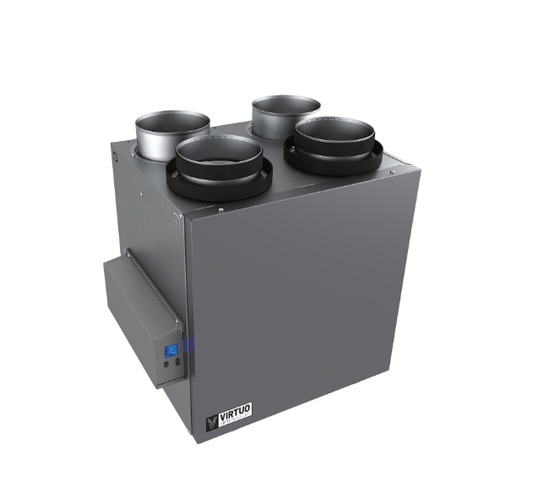Collection: Air Exchangers
A ventilation system is a mechanical setup designed to provide fresh air to indoor spaces while removing stale air, maintaining air quality, and regulating temperature and humidity. It ensures a healthy and comfortable environment by controlling pollutants, odors, and moisture. Common in residential, commercial, and industrial buildings, these systems balance energy efficiency with indoor air quality (IAQ) requirements, often integrating with heating, ventilation, and air conditioning (HVAC) systems.
Ventilation systems can incorporate energy recovery ventilation (ERV) or heat recovery ventilation (HRV), both of which enhance efficiency by recovering energy from exhaust air to precondition incoming fresh air. While similar, they serve distinct purposes:
- Heat Recovery Ventilation (HRV): HRVs transfer heat between outgoing and incoming air streams using a heat exchanger. In winter, the system captures heat from warm exhaust air to preheat cold incoming air, reducing heating costs. In summer, it can work in reverse, cooling incoming air with cooler exhaust air. HRVs focus solely on sensible heat (temperature) transfer, making them ideal in climates with significant temperature differences. They are effective for maintaining thermal comfort while minimizing energy loss, typically recovering 60-85% of heat.
- Energy Recovery Ventilation (ERV): ERVs go beyond heat transfer by exchanging both sensible heat and latent energy (moisture). Using an energy recovery core, ERVs transfer heat and humidity between air streams. In humid climates, they reduce moisture in incoming air, easing the load on air conditioning. In dry climates, they add moisture to incoming air, improving comfort. ERVs are more versatile in regions with varying humidity levels, typically recovering 50-75% of total energy (heat and moisture combined).
Key Differences:
- Moisture Transfer: HRVs transfer only heat, while ERVs transfer both heat and moisture, making ERVs better suited for humidity control.
- Climate Suitability: HRVs excel in cold, dry climates where temperature regulation is the priority. ERVs are preferred in humid or mixed climates where moisture management is critical.
- Energy Efficiency: ERVs generally recover more total energy due to moisture transfer, but HRVs may be more cost-effective in climates where humidity control is less critical.
- Applications: HRVs are common in colder regions (e.g., northern Europe, Canada), while ERVs are favored in humid areas (e.g., southeastern U.S., tropical climates).
Both systems improve IAQ and reduce energy costs, but the choice depends on climate, building needs, and humidity control requirements. ERVs offer broader functionality, while HRVs are simpler and often more affordable for heat-focused applications. Browse through our line of products all made in Canada.
-
Broan AI Series V150H75NS HRV (Side Ports) - 150 CFM
Vendor:BroanRegular price $978.00 CADRegular priceUnit price / per$1,198.00 CADSale price $978.00 CADSale -
Venmar AVS Ai2 Series A180E75RT ERV (Top Ports)
Vendor:VenmarRegular price $1,998.00 CADRegular priceUnit price / per$2,086.00 CADSale price $1,998.00 CADSale -
Fantech FIT Series FIT 120E Energy Recovery Ventilator (ERV)
Vendor:FantechRegular price From $1,088.00 CADRegular priceUnit price / per -
Fantech VHR Series VHR-150 HRV
Vendor:FantechRegular price $1,078.00 CADRegular priceUnit price / per$1,098.00 CADSale price $1,078.00 CADSale -
Broan ONE Energy Recovery Ventilator (ERV) - 155 CFM
Vendor:BroanRegular price $1,898.00 CADRegular priceUnit price / per -
Broan HRV 7.1 Heat Recovery Ventilator (HRV) - 104 CFM
Vendor:BroanRegular price $1,300.00 CADRegular priceUnit price / per -
Fantech VHR70R ES Compact HRV
Vendor:FantechRegular price $888.00 CADRegular priceUnit price / per$898.00 CADSale price $888.00 CADSale -
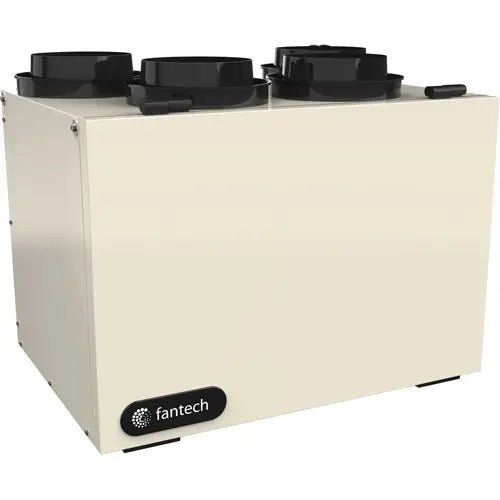 Out of Stock
Out of StockFantech VHR Series VHR-2004 HRV
Vendor:FantechRegular price $1,065.00 CADRegular priceUnit price / per -
Lifebreath RNC6-HEX-TPD Heat Recovery Ventilator (HRV)
Vendor:LifebreathRegular price $1,288.00 CADRegular priceUnit price / per -
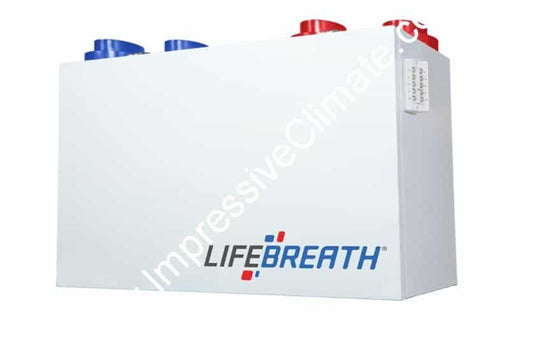 Out of Stock
Out of StockLifebreath RNC Series RNC5-HEX-TPD (HRV)
Vendor:LifebreathRegular price $991.00 CADRegular priceUnit price / per -
Lifebreath Max Series 205 MAX (HRV)
Vendor:LifebreathRegular price $1,498.00 CADRegular priceUnit price / per -
Lifebreath Max Series 155 MAX Heat Recovery Ventilator (HRV)
Vendor:LifebreathRegular price $1,448.00 CADRegular priceUnit price / per$1,468.00 CADSale price $1,448.00 CADSale -
Lifebreath 180 ERVD-AB Energy Recovery Ventilator (ERV) - 172 CFM
Vendor:LifebreathRegular price From $1,588.00 CADRegular priceUnit price / per$1,688.00 CADSale price From $1,588.00 CADSale -
Lifebreath 170 ERVD Energy Recovery Ventilator (ERV)
Vendor:LifebreathRegular price $1,398.00 CADRegular priceUnit price / per -
Broan AI Series V230H75RT HRV (Top Ports) - 231 CFM
Vendor:BroanRegular price $2,198.00 CADRegular priceUnit price / per -
Broan AI Series V160H65RT HRV (Top Ports) - 160 CFM
Vendor:BroanRegular price $1,188.00 CADRegular priceUnit price / per$1,288.00 CADSale price $1,188.00 CADSale

